Satin Fabric: A Friend For Celebrations
- - Category: Industrial
- - 15 Dec, 2021
- - Views: 845
- Save
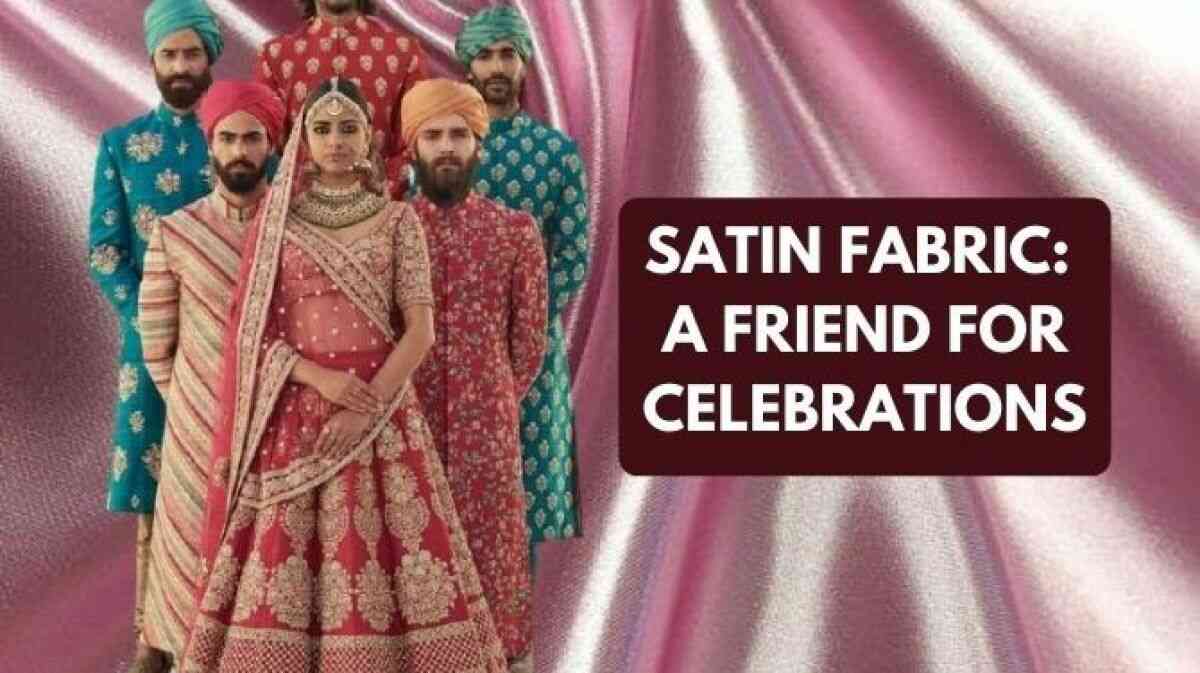
How did satin fabrics become so popular and gain so much prominance since its inception?
Dressing up for a wedding or an event is something special for all of us. Most of us would pick something that looks luxurious, silky, and shiny. Who would want to miss shining under the lights! Satin fabrics are often used for making such fancy dresses. But what really is a Satin Fabric?
What is Satin Fabric?
Satin is a type of weave that stands shoulder to shoulder with the plain weave and twill weave. These three types of weaves are commonly used for making fabrics throughout the world. When woven, the fabrics will have a soft, shiny, elastic, and beautiful drape on them. Anyone can identify these materials by their lustrous surface and softness.
It is recorded that Satin weaves originated in China during the medieval periods when the silk weavers produced them for the first time. The name Satin is derived from the Arabic word Zaitun, which was another name for the Chinese port Quanzhou. During the height of the textile trade through the silk road, the weaving techniques and the fabrics traveled across the world to various kingdoms and countries.
The first western country to weave a satin fabric was Italy, during the twelfth century. It quickly became popular across Europe such that the furniture in the Palace of Versaille is made up of satin upholstery.

It was only during the 1800s that the Satin fabrics were used for making gowns and evening dresses for women of the upper class and working class. During the late 1900s, the journalists and advertisers worked really hard to bring satin undergarments to the general public as they were considered to be used by prostitutes during those times.
What are the characteristics of a Satin Weave?
Satin is woven from long and continuous filament fibers. Even though the fabrics that are made up of silk were used to be called Satin, now satin fabrics are also made from other continuous filament fibers like rayon and polyester. The satin weave is more a more complex weave as the arrangement of warp and weft threads is staggered due to the step number. Satin weave structures move the weft intersection across at least 1 warp thread before beginning the cycle again. The satin weaves are mainly categorized into two:
- 5 End, 4/1 Satin Weave:

(Basic 4/1 satin weave, warp-float facing)
In this type of satin weave, the warp floats over 4 wefts, goes under one. This continues over and over. So, a satin weave will always be in a similar pattern as follows. Over X and under 1. This weaving pattern is responsible for the smooth front side and a dull, matte reverse side.
2. 8 End, 7/1 Satin weave:
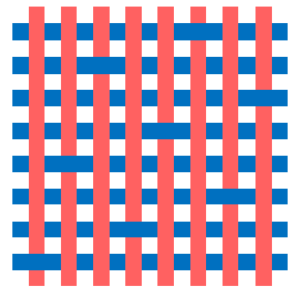
Here, the weft intersection has moved 2 warps along on the next row. There is also a third type of satin weave known as the 5 harness satin weave. This is very similar to that of the 4 harness satin weave except the weft thread goes over four threads and then under one.
Satin Fabrics from our collection

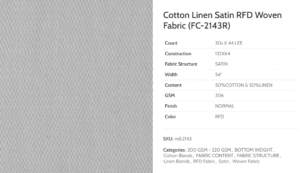
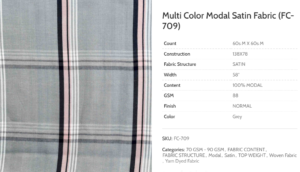
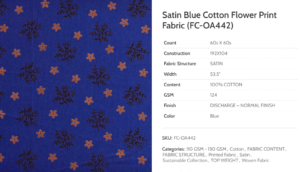

The most noticeable features of a satin fabric are:
- Shine
- Beautiful drape
- Durability
- Difficult to handle due to threads
- Snags appear often
- Doesn’t easily wrinkle
Understanding the difference between Satin & Sateen
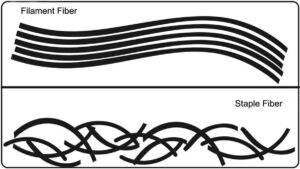
We have clearly understood what a satin fabric is from the above section. Now there is another term called the Sateen, and most of the time people get confused over these two. Are they the same? Or are they different?
A Sateen fabric is a similar type of fabric that is woven using the weave but the fiber used will not be a continuous filament. It will be made up of staple fibers like cotton.
Read more about cotton fabrics.
We already know that cotton is a short fiber when compared with rayon or silk. Unlike Satin, Sateen is more durable and can withstand machine wash. It can also be bleached, dyed, or printed with great consistency.
Do you want us to supply woven fabrics to you? Contact us for custom development.

